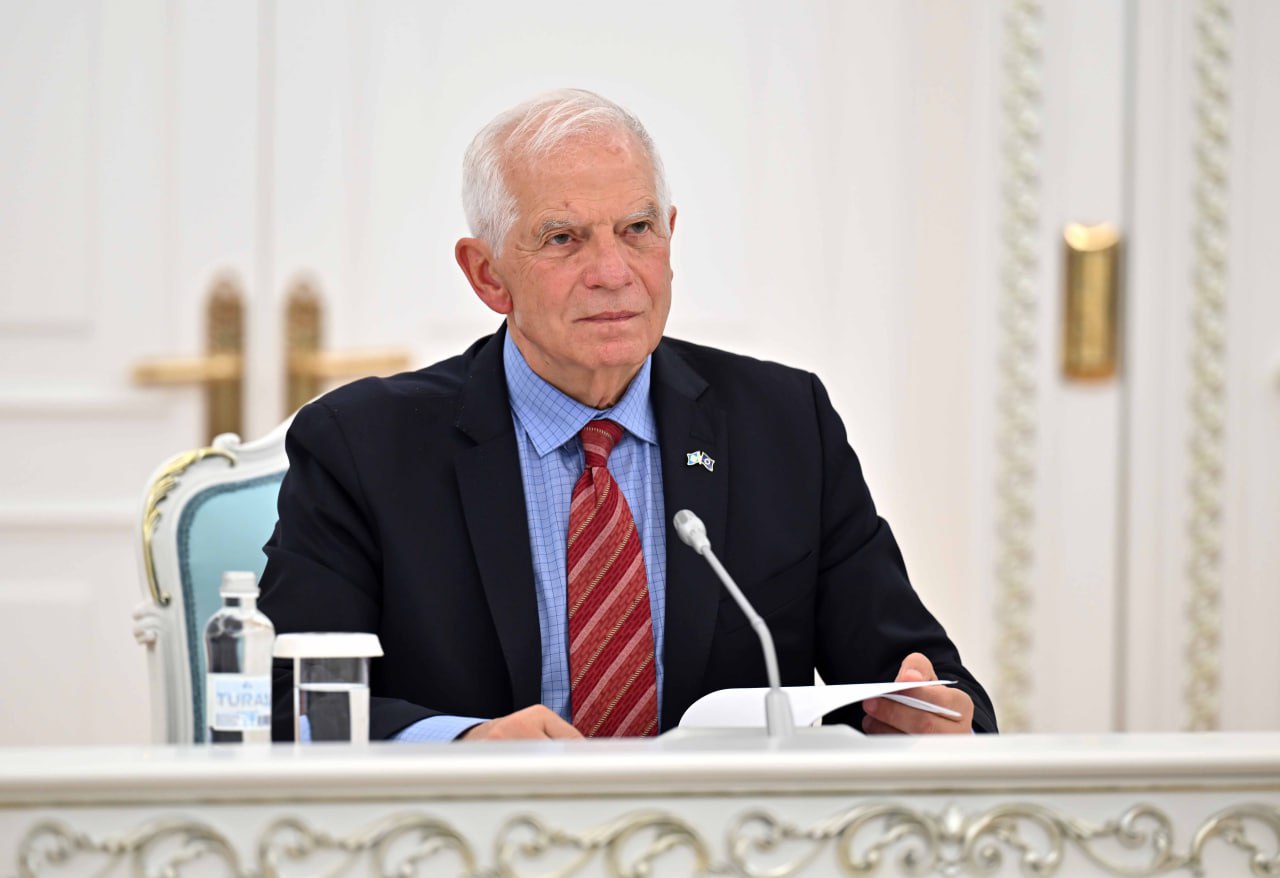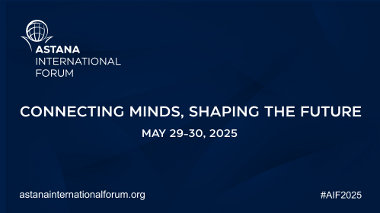ASTANA – The European Union (EU) High Representative for Foreign Affairs and Security Policy and Vice President of the European Commission Josep Borrell concluded an official visit to Kazakhstan and the Kyrgyz Republic on Aug. 1-3.

The European Union (EU) High Representative for Foreign Affairs and Security Policy and Vice President of the European Commission Josep Borrell. Photo credit: Akorda
Borrell had high-level talks in Kazakhstan, including with President Kassym-Jomart Tokayev and senior officials in the Kyrgyz Republic, in what was an “important opportunity to confirm, in a challenging geopolitical context, the EU’s commitment to further developing relations with both countries, as well as with the whole region of Central Asia,” according to an official statement.
According to Filippo Costa Buranelli, an associate professor in international relations at the University of St. Andrews, EU and Central Asia boast promising opportunities in the fields of economy, energy, tourism, and education.
“Yet, the EU needs to realize that there is increased competition in the region, that the agency and capacity of the Central Asian states to choose their partners has increased over the years, and that the EU values and standards are attractive for the region but there must be reciprocity, respect, and recognition of diversity and needs,” said Costa Buranelli.
EU – Central Asia relations
The professor noted a “marked phase of recalibration” in the EU strategy towards Central Asia.
“Notably, Borrell’s visits to Kazakhstan and Kyrgyzstan are particularly interesting, as these two countries have been in the spotlight in terms of secondary sanctions related to the war in Ukraine,” he added.
Relations between the EU and Central Asia have seen some progress in recent years. In January, the European Parliament adopted a resolution on the EU strategy for Central Asia, which aimed to revise the bloc’s approach to the region based on the recommendations from the report prepared by the Committee for Foreign Affairs (AFET).
The Parliament highlighted the increased geostrategic significance and potential for partnership between the EU and Central Asia, particularly in light of recent geopolitical events. Economically, areas such as connectivity, security, climate change, energy, and critical materials present opportunities for alignment, with Enhanced Partnership and Cooperation Agreements (EPCA) playing a crucial role.
Kazakhstan so far remains the only country in Central Asia to have signed EPCA with the EU, which envisages wide-ranging cooperation in 29 areas. Preparations for ECPAs are ongoing with Kyrgyzstan, Tajikistan, and Uzbekistan. Turkmenistan remains the only Central Asian country without a Partnership and Cooperation Agreement in place.
In 2022 and 2023, the Central Asian leaders and the President of the European Council held their first-ever high-level meetings, which led to the development of a joint roadmap to deepen ties between the EU and Central Asia.
The inaugural EU-Central Asia leaders’ summit is scheduled for 2024, aiming to formalize cooperation at the highest political level and align the EU’s political influence in the region with its role as a major donor and investor.
EU’s approach to the region
Eldaniz Gusseinov, a non-resident research fellow at Istanbul-based Haydar Aliyev Center for Eurasian Studies at Ibn Haldun University, still sees little progress in the relations between the EU and Central Asia.
“At this stage, there is a lot of talk, but not enough time has passed to assess the results. In my opinion, there has been little progress so far,” he told The Astana Times.
Gusseinov explained that the EU and some G7 countries are trying to enter the region based on the incorrect assumption that Russia is losing influence while China is expanding. Many analysts from these countries view the situation in this way, but he believes this perspective is more like ‘wishful thinking.’
“As a result, the EU faces significant difficulties in expanding its presence in the region, as it genuinely believed there was a vacuum that could be filled. In reality, Russian companies have become more protective of their market in Central Asia, as it has become even more critical,” he said.
When asked about the EU’s primary geopolitical goals in Central Asia, Gusseinov pointed out the energy resources.
Energy cooperation remains the cornerstone of cooperation, and it became particularly acute as the EU sought to find an alternative to lost European energy markets.
“Gaining access to the exploration and extraction of rare earth minerals in the region to prevent China’s strengthening, although this is not only about China. Russia is also very influential in this area. In fact, all agreements signed between Central Asian countries and the EU are centered around gaining access to rare earth metals,” he said.
The expert also noted the EU is looking to expand its presence in the Central Asian market by increasing exports from its member countries to the region.
“The conflict in Ukraine has cost Germany a significant amount. The crisis began with the coronavirus pandemic, followed by Russia’s gas war against Europe in 2021. Then, events in Ukraine led to the severance of trade and financial ties with Russia, as well as Belarus, and the closure of German businesses in Ukraine,” he explained.
What he deemed as the four-year crisis has cost Germany approximately 7% of its GDP. “They are trying to make up for the losses at the expense of Central Asian countries,” he added.
Opportunities and challenges
For EU–Central Asia relations, the shift in the geopolitical landscape creates challenges but also opportunities for increased cooperation.
“Among the opportunities, of course, is the offer of investments to diversify the economic and political relations of Central Asian countries. However, so far, the EU has been developing weakly in this direction, primarily offering Central Asian countries loans for infrastructure development,” said Gusseinov.
According to him, the EU’s most effective instruments are its development aid and soft power. According to data from the European Parliament, between 2014 and 2020, the EU provided 1.1 billion euros (US$1.2 billion) in grant funding, technical assistance, and direct budget support to the region under the EU’s development cooperation instrument. This amount increased by 62% from the previous programming period.
Filippo Costa Buranell pointed out that many Central Asian officials and diplomats view the EU’s engagement as “transactional and instrumental,” aimed at countering the influence of Russia and China, rather than a sincere effort to build partnerships.
He highlighted the importance of the EU reevaluating its diplomatic strategies and long-term objectives in Central Asia, along with the resources dedicated to achieving them.
“The EU is slowly morphing into a geopolitical actor, not only interested in the promotion of good governance but more and more focused on playing a central role in terms of reaping economic opportunities, building favourable transportation linkages, reducing Russian and Chinese influence in the region, and ensuring access to energy and mineral resources,” said the professor.


